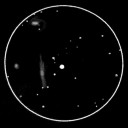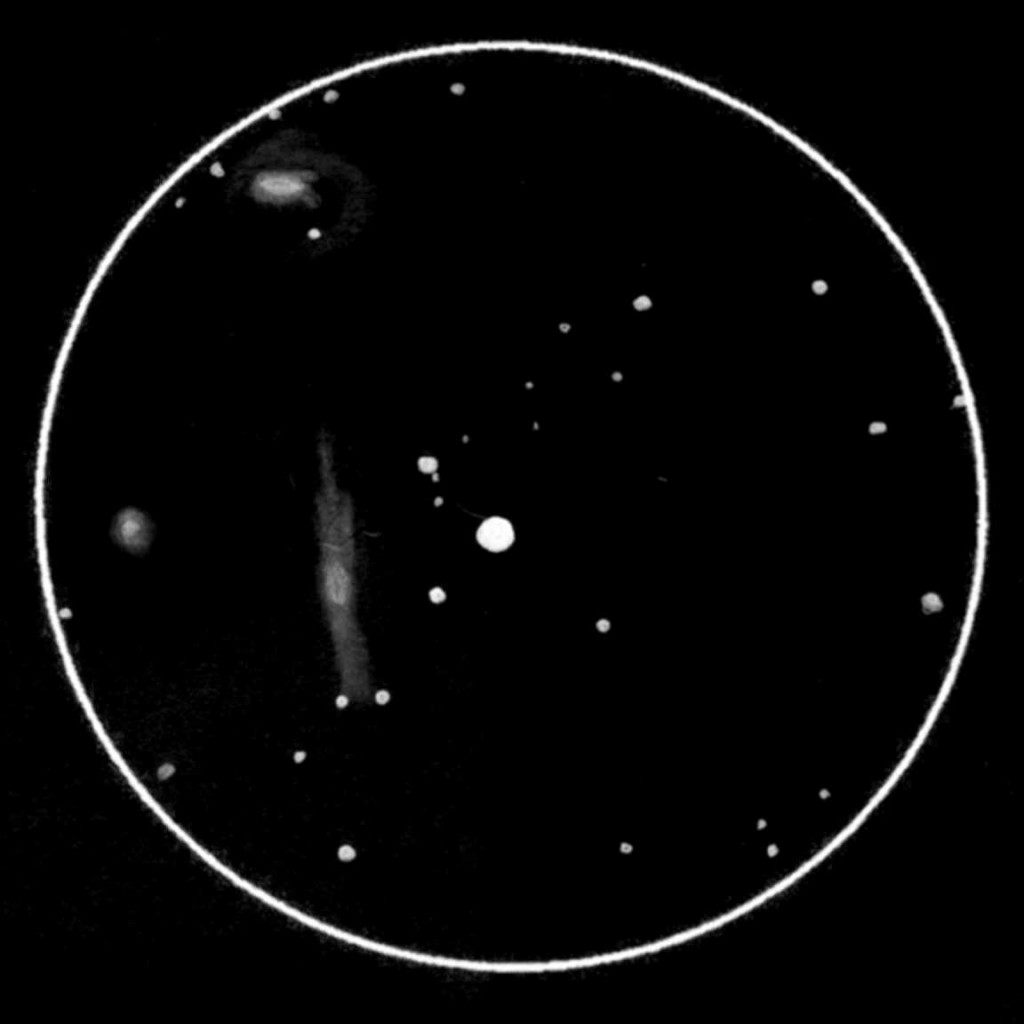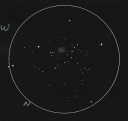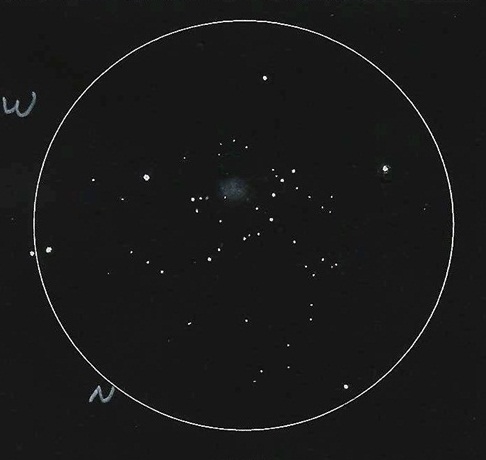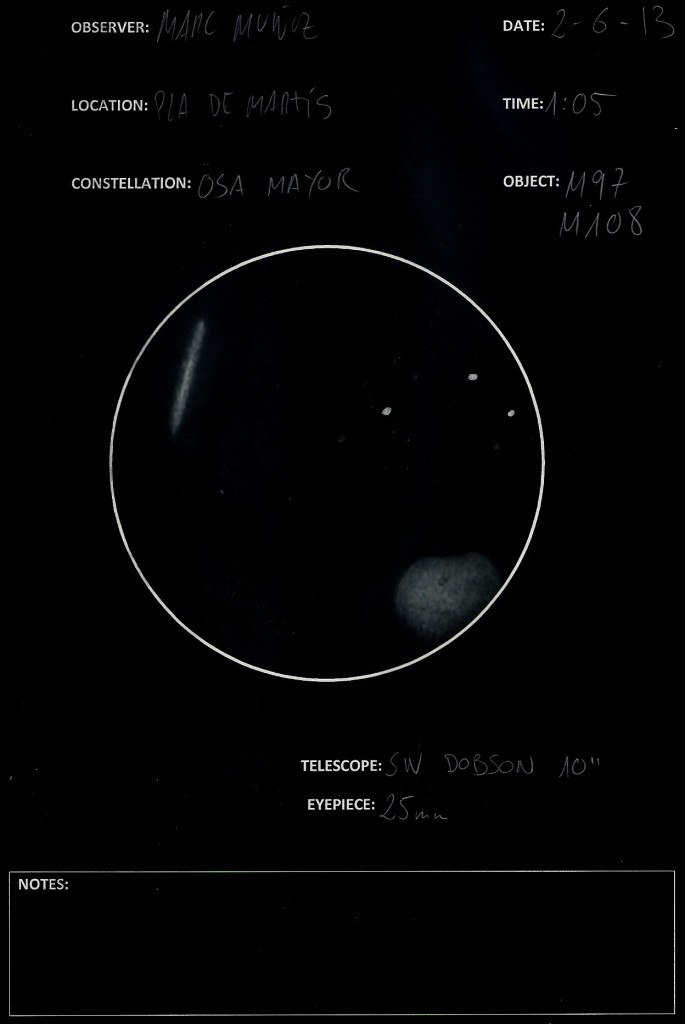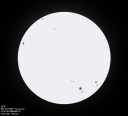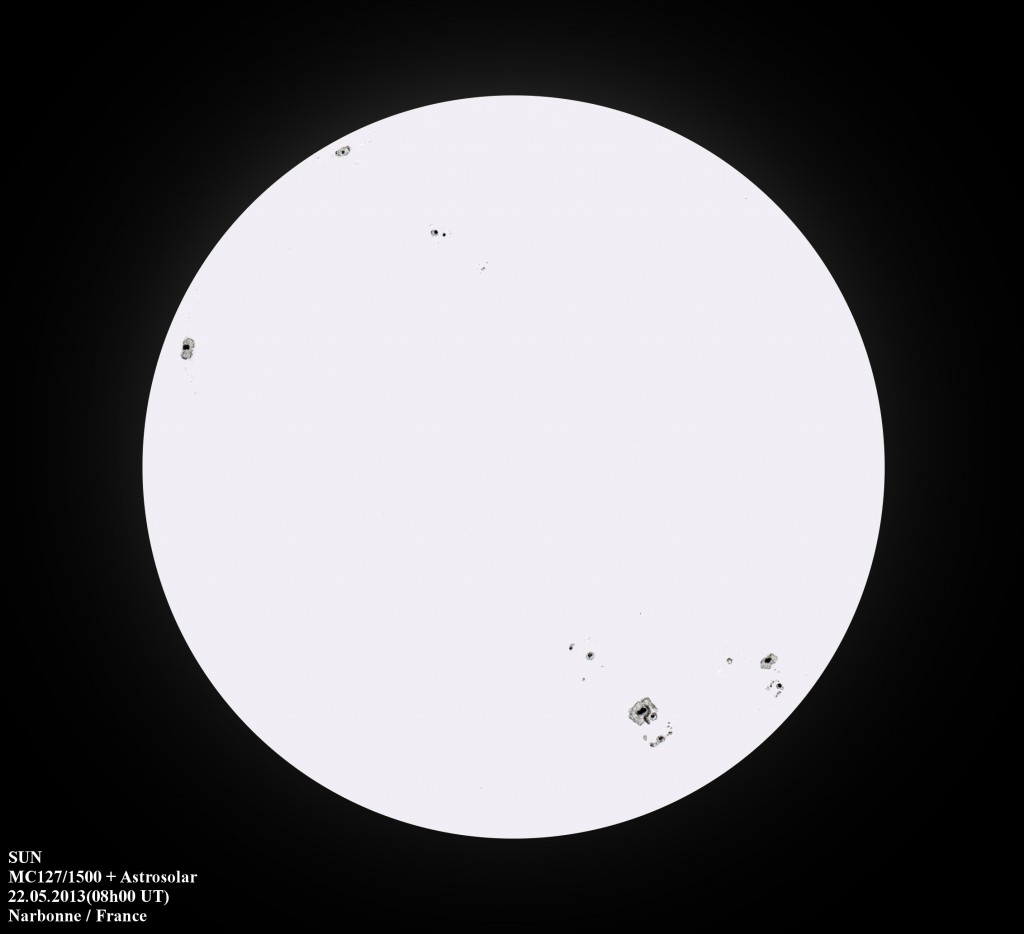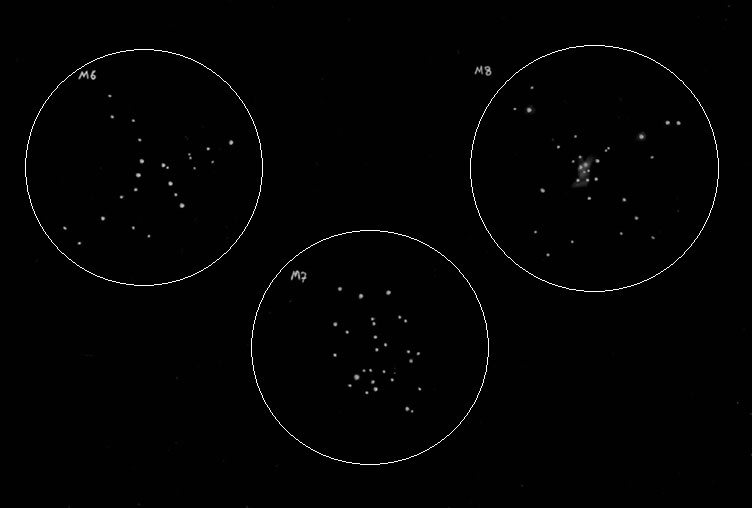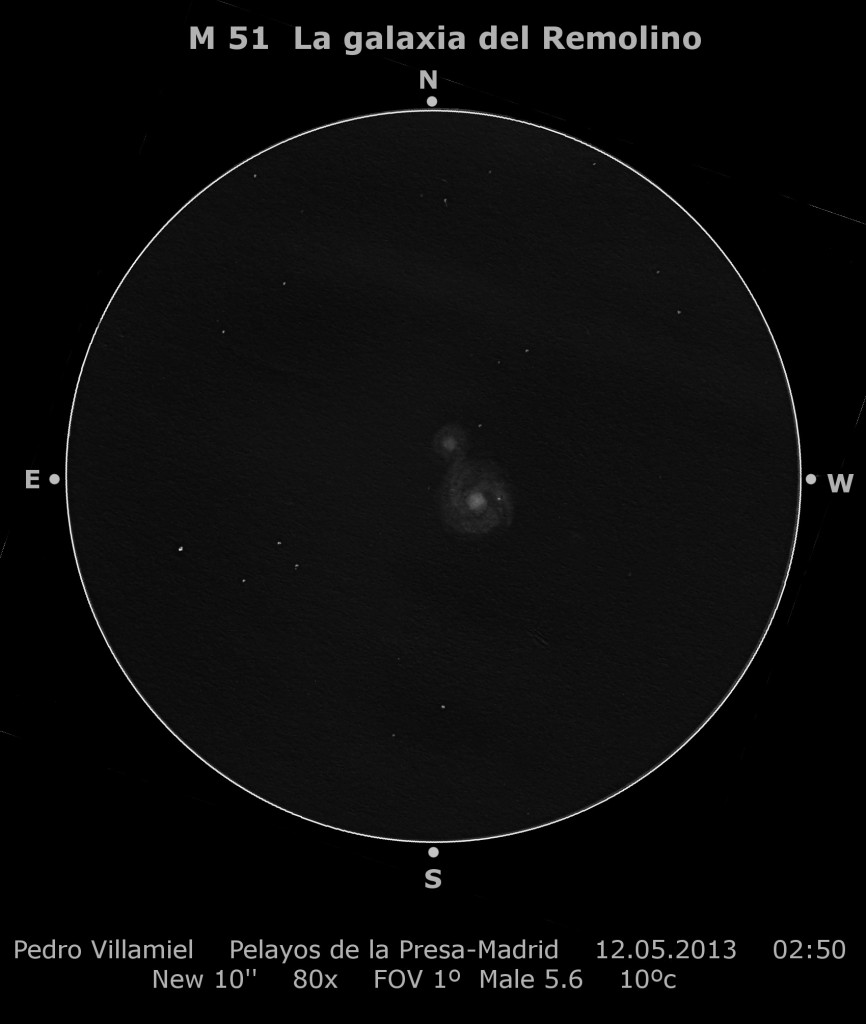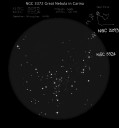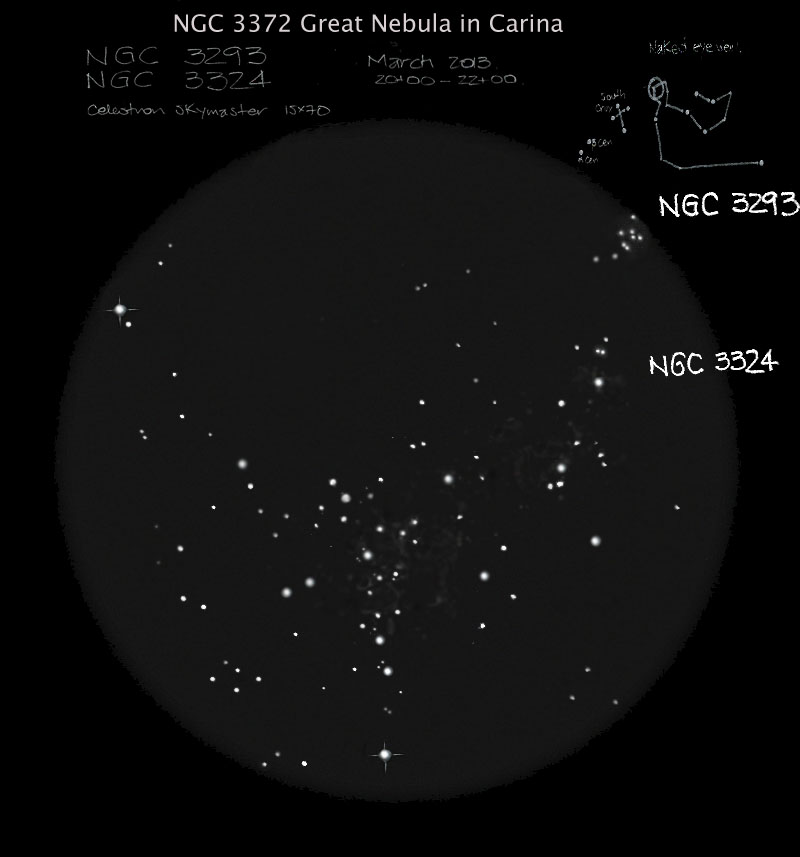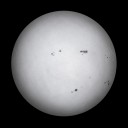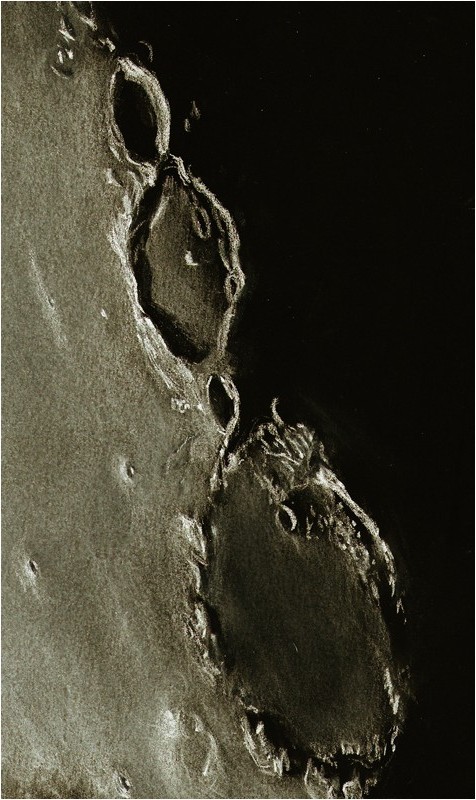
Object Name: Grimaldi, Hevelius, Cavalerius
Object Type: Lunar craters
Location: Twello, The Netherlands
Date: April 23, 2013
Media: White pastel pencil on black paper
It has been more than a year(!) since my last lunar sketch, but on the evening of April 23th I dragged my 3″ f/16 Polarex refractor outside for some good old sketching.
The most prominent feature on the lunar surface was a line of large craters formed by Grimaldi , Hevelius and Cavalerius. Although the Moon didn’t climb higher than 30 degrees above the Southern horizon, magnifications up to 200x could easily be used. High cirrus clouds made the image a bit hazy (and I had to stop sketching after an hour because of thickening clouds) but the seeing was quite good. The sketch was made through an old 7mm Orthoscopic eyepiece (171x). The image is mirror reversed (north=up, west=left).
Clear skies!
Roel Weijenberg
www.roelblog.nl

